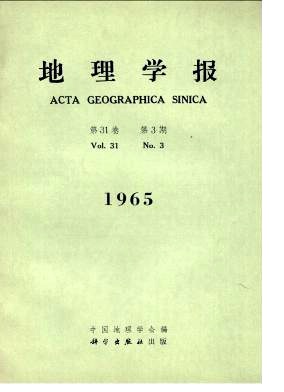H.C. YOUNG, T.H. CHIANG
The Quaternary deposits of the Chinghai Lake Basin have not yet been studied syste- matically. Based on the geological field investigations, these deposits are tentatively divided into the Hatawan, the Erhlangchien, the Lower Puhaho and the Upper Puhaho Formations in ascending order by the authors. The lowermost one is a shallow water lake divided into the Hatawan, the Erhlangchien, the Lower Puhaho and the Upper Puhaho Formations in ascending order by the authors. The lowermost one is a shallow water lake deposit, composed of pink clays interbedded with thin-layered yellowish green fine sands. The second one is a typical lacustrine sediment which consists of greyish green clays and clayey silts intercalated with thin-layered grey sands or pebbles. The third one comprises fluvio-lacustrine sediments and loesses. The uppermost one contains proluvial, alluvial, fluvio-lacustrine sediments and loesses. The uppermost one contains proluvial, alluvial, eluvial, lacustrine, deltaic and aeolian deposits. The total thickness of these formatio.ls is about 200 metres. In all four formations, fossils are rarely found. The authors have tried to settle the problem of the geological ages of these deposits throughout palynological investigation. Thus, 177 rock samples collected from eight natural profiles and five boring-profiles of the above mentioned deposits have been studied. Unfortunately only a small quantity of pollen grains and spores has been obtained from 33 samples of them. Forty-four species (or forms) of pollen and spores referred to 35 genera are described, and a part of pollen spectra of pollen-bearing profiles are presented in this paper. Besides these, the stratigraphical division and the palaeoclimatic and palaeogeographic conditions of the Quaternary Period in this region are discussed preliminarily. From the Hatawan Formation, a few spores of Polypodiaceae and a number of pollen grains of Picea, Cedrus, Pinaceae, Cupressaceae, Populus, Salix, Juglans, Quercus, Allum, Artemisia, Liliaceae, Leguminosae, etc. have been observed. Among them, the pollen grains of herbaceous plants are dominant, and the tree pollen grains are secondary in frequency. The Erhlangchien Formation is comparatively rich in spores and pollen. Many pollen grains of Picea, Gedrus, Pinus, Ephedra, Pinaceae, Cupressaceae, PopuLus, SaLix, JugLans, ALnus, Betula, Quercus, Potamogeton, AlLium, Asparagus, Artemisia, Gramineae, Li-liaceae, Urticaceae, Chenopodiaceae, Amaranthaceae, Rosaceae, Compositae, etc. and some spores of SaLvinia, Pteridaceae, Polypodiaceae, and Bryophyta have been obtained from it. The pollen flora is characterized by the predominance of the pollen grains of woody plants and the diminution of those of herbaceous plants. In the Lower Puhaho Formation, the microflora is very poor. So far only some pollen grains of Picea, Pinus, Populus, Salix, Artemisia, Chenopodiaceae, Leguminosae, etc. and a few spores of fern and moss have been found. In the Upper Puhaho Formation, there are some pollen grains of Salix, Allium, As- paragus, Gramineae, Chenopodiaceae, Leguminosae and Compositae (including Artenzisia). The pollen of herbaceous plants are absolutely dominant. The other prominent feature of this microflora is the absence of pollen of arboreal plants and spores of fern. According to the spore and pollen assemblages, the development of the vegetation of the Quaternary Period in this region may be divided into two stages, the stage from forest-steppe to forest and that from forest to steppe. In the former stage, thermo-philous and hygrophilous trees, such as aspen, alder, birch and oak, were flourishing there. The climate of Chinghai Lake Basin during that time, therefore, should be warmer and moister than that of the present. At the beginning of the latter stage, however, such xerophilous herb as Chenopodiaceae, Artetfzisia, etc. had prevailed in the area, thus it indicated that the climate was rather dry. Since then, the vegetation had been chang-ing gradually into the steppe, just like that of the present, and the climate was trending towards semi-aridity. Comparing the preceding spore and pollen assemblages with those of North China, West Siberia and Kazakstan of Central Asia, the authors suggest that the lower three formations are of Pleistocene Epoch, and the upper one is of Holocene Epoch in age. Owing to the similarity between the spore and pollen assemblage of the Erhlangchien Formation and that of the Choukoutien Stage, it is possible that the Erhl.angchien Forma-lion may be equivalent to the Choukoutien Stage, belonging to Middle Pleistocene. The age of the Hatawan Formation may possibly be considered of Early-Middle Pleistocene, and that of the Lower Puhaho Formation may be of Late Pleistocene or Late Pleistocene to Holocene. Based on the pollen analysis, the authors consider that the Chinghai Lake had al-ready appeared during the Early Pleistocene and that in the Middle Pleistocene, it should be a fresh lake with the largest width and depth in its history. After that time, however, the lake began to diminish and to concentrate strikingly. It may be assumed that the diminution and concentration of the lake are probably due to the elevation of the earth's crust on the end of the Middle Pleistocene. This is indicated both by the shifts of floras and by the variations of the sedimentary facies during the interval.
